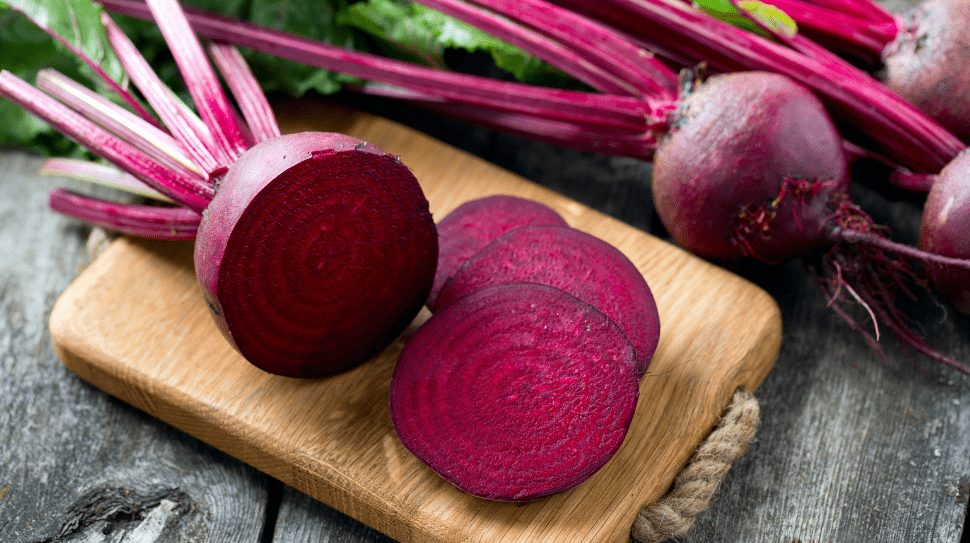
How to Grow Beets from Seed: Essential Tips for Gardeners
Growing beets from seed is a rewarding and straightforward process that allows gardeners to enjoy this nutritious and versatile vegetable straight from their own gardens. In this comprehensive guide, we will cover everything you need to know about how to grow beets from seed, ensuring a bountiful and healthy harvest. Follow these essential tips and watch your beet crop thrive.
Table of Contents
ToggleUnderstanding Beets and Their Varieties
A. History and uses of beets
Beets have a long history of cultivation and have been used in a variety of culinary applications. They are known for their deep, earthy flavor and vibrant colors, making them a popular choice in salads, soups, and as a standalone side dish. There are several varieties of beets available, including red, golden, and striped, each with its own unique flavor and appearance.
1. Nutritional benefits
Beets are also a highly nutritious vegetable, rich in vitamins, minerals, and antioxidants. They are particularly high in folate, potassium, and fiber, making them a great addition to a healthy diet.
B. Popular Beet Varieties
There are several popular varieties of beets, each with its own unique characteristics. The most common varieties include:
- Red beets: These are the most widely available and are known for their deep red color and earthy flavor.
- Golden beets: These beets have a milder, sweeter flavor compared to red beets and have a vibrant golden color.
- Striped beets: Also known as chioggia beets, these beets have a striking red and white striped pattern when sliced, and have a slightly milder flavor compared to red beets.
Each variety of beet can be used in a variety of culinary applications and offers its own nutritional benefits.
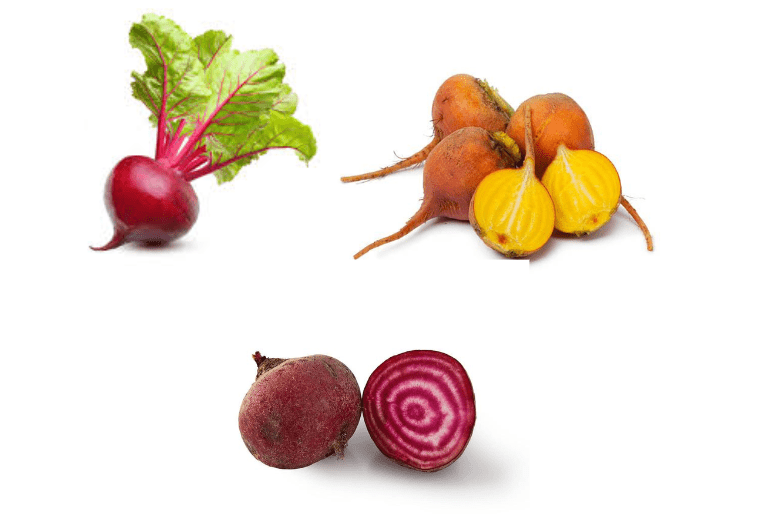
1. Choosing the right variety for your garden
Will depend on your personal preference and the specific culinary uses you have in mind. Red beets are versatile and well-suited for roasting, pickling, and salads, while golden beets are great for adding color to dishes and have a sweeter taste. Striped beets can add visual interest to salads and other dishes. Consider the flavor profile and color you’re looking for when choosing which variety of beet to grow in your garden.
Preparing for Planting
A. Selecting Seeds
When selecting seeds for striped beets, also known as chioggia beets, look for a reliable seed supplier with a good reputation. Make sure to choose seeds that are specifically labeled as chioggia or striped beets to ensure you get the right variety. Consider factors such as the size of your garden, the climate in your area, and your planting schedule when choosing the quantity of seeds to purchase. It’s also important to check the expiration date on the seed packet to ensure they are fresh and viable for planting.
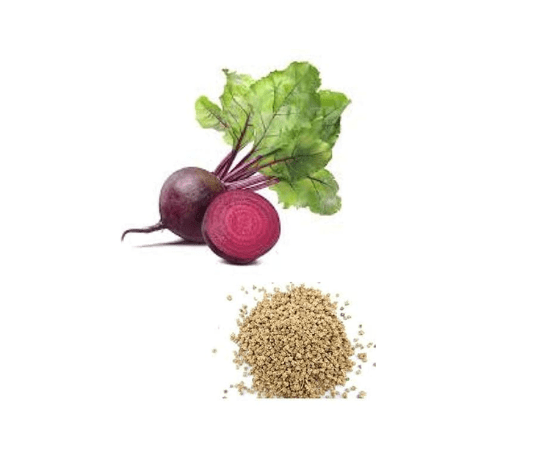
1.Organic vs. non-organic seeds
When choosing between organic and non-organic seeds for striped beets, consider your personal preferences and gardening practices. Organic seeds are grown without synthetic pesticides or fertilizers, which may be important to some gardeners. Non-organic seeds may be more affordable and readily available. Ultimately, the decision between organic and non-organic seeds depends on your individual gardening goals and values.
B. Soil Preparation
When preparing your soil for planting striped beets, it’s important to ensure that the soil is well-drained, fertile, and has a neutral pH. Adding organic matter, such as compost or well-rotted manure, can improve soil structure and provide essential nutrients for healthy beet growth. Consider conducting a soil test to determine if any amendments are needed to optimize soil conditions for growing beets. It’s also important to remove any rocks, weeds, or debris from the planting area to create a clean and suitable environment for the seeds.
C. Choosing the Right Location
When choosing the right location for planting striped beets, consider a spot that receives full sun or partial shade, as beets thrive in these conditions. It’s also important to select a location with well-drained soil to prevent waterlogging, which can lead to root rot. Additionally, consider the proximity to other plants and the potential for competition for resources. Be sure to provide enough space for the beets to grow and avoid planting them too close to other crops. Lastly, consider factors such as wind exposure and protection from potential pests and diseases when selecting the ideal location for your beet plants.
Planting Beet Seeds
A. When to Plant
Beet seeds can be planted directly into the ground as soon as the soil can be worked in the spring, typically about two to four weeks before the last expected frost. They can also be planted in late summer for a fall harvest. It’s important to plant the seeds in soil that is at least 50°F (10°C) as beets prefer cooler temperatures for germination.
B. Sowing Seeds
When sowing beet seeds, it’s important to consider the spacing between plants. Beets should be planted about 1-2 inches apart and at a depth of 1/2 inch. It’s important to provide enough space for the beets to grow and avoid overcrowding, as this can lead to competition for resources such as water and nutrients.
C. Watering and Initial Care
After planting beet seeds, it’s important to keep the soil consistently moist but not waterlogged. Be sure to water the seeds immediately after planting and continue to water them regularly, especially during dry periods. It’s also important to keep the area weed-free to prevent competition for resources. Once the seedlings have emerged, thin them to about 3-4 inches apart to allow for proper root development. Additionally, applying a layer of mulch can help retain moisture and keep the soil temperature consistent. With proper care, beet seeds should germinate within 5-10 days.
Caring for Growing Beet Plants
A. Thinning Seedlings
Once your beet seedlings have emerged, it’s important to thin them to about 3-4 inches apart to ensure proper root development and allow the plants to grow to their full potential. This can help prevent overcrowding and competition for resources. Simply remove the excess seedlings, leaving the strongest and healthiest ones to continue growing. This will promote healthier and more productive beet plants in the long run.
B. Watering and Fertilizing
Beet plants require consistent moisture to thrive, so it’s important to water them regularly, especially during dry periods. However, it’s also important not to overwater, as this can lead to rot and disease. A good rule of thumb is to water deeply once or twice a week, ensuring the soil remains consistently moist but not waterlogged.
In terms of fertilizing, beet plants benefit from a balanced fertilizer applied every 3-4 weeks during the growing season. Be sure to follow the instructions on the fertilizer package and avoid over-fertilizing, as this can lead to excessive foliage growth at the expense of root development. With proper care and maintenance, your beet plants should grow strong and healthy, producing a bountiful harvest.
C. Weed Control
Weed control is an important aspect of maintaining a healthy beet crop. Weeds can compete with beet plants for nutrients and water, so it’s important to keep them in check. Regular weeding by hand or using a hoe can help prevent weeds from taking over. Using mulch around the base of the plants can also help suppress weed growth. It’s important to avoid using herbicides near beet plants, as they can damage or kill the crop. By staying on top of weed control, you can help your beet plants thrive and produce a successful harvest.
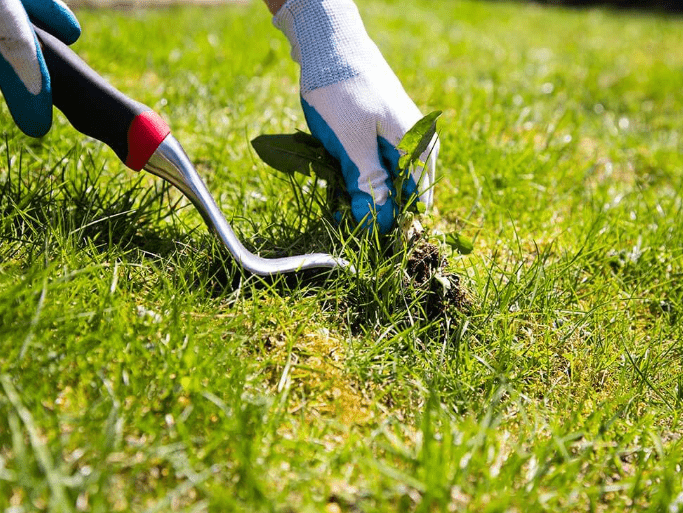
D. Pest and Disease Management
Pest and disease management is crucial for maintaining the health of your beet crop. Regular monitoring for pests such as aphids, beetles, and leafhoppers can help you catch any infestations early and take appropriate action. Using natural predators, like ladybugs and lacewings, can also help control pest populations. Additionally, rotating crops and using resistant beet varieties can help prevent disease outbreaks. It’s important to promptly remove any infected plants to prevent the spread of disease. By implementing these management practices, you can help protect your beet crop from pests and diseases and ensure a successful harvest.
Harvesting Beets
A. When to Harvest
Beets are typically ready to harvest about 50-70 days after planting, depending on the variety. You can tell when they are ready by checking the size of the beet roots, which should be about 1-3 inches in diameter. The greens on top should also be about 4-6 inches tall. It’s best to harvest beets in the morning when the greens are still crisp and the roots are full of moisture. Simply grasp the beet greens near the root and gently pull them up, being careful not to damage the roots. Once harvested, beets can be stored in a cool, dark place for several weeks. Happy harvesting!
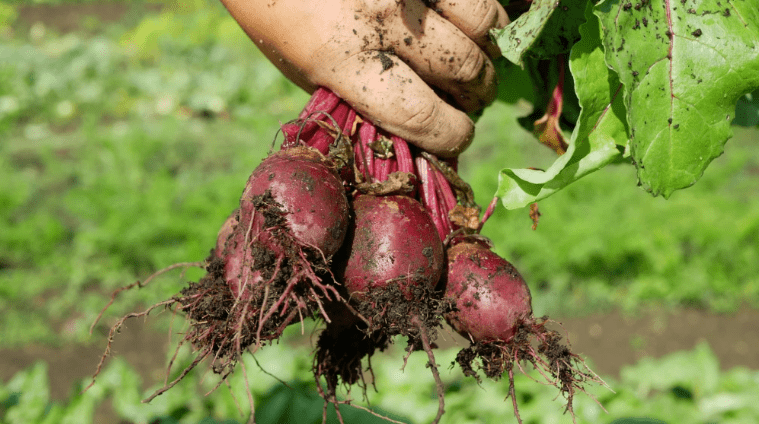
B. Storing Your Harvest
When storing your harvested beets, it’s best to cut off the greens, leaving about an inch of the stem attached to the root. This will help the beets last longer in storage. You can store beets in the refrigerator for up to 3 weeks, or in a cool, dark place such as a root cellar for several months. Just make sure to remove any excess soil from the roots before storing. Enjoy your fresh beets!
Tips for a Successful Beet Crop
A. Succession Planting
Succession planting is a great way to ensure a continuous harvest of beets throughout the growing season. By planting new seeds every 2-3 weeks, you can stagger the maturity of your beets and have a steady supply of fresh produce. This method can also help you avoid a glut of beets all at once. Happy gardening!
B. Companion Planting
Beets are great companions for crops like lettuce, onions, and garlic. Planting them alongside these vegetables can help deter pests and promote healthy growth. Additionally, avoid planting them near pole beans or mustard greens, as they can inhibit the growth of beets. Have fun experimenting with different companion plant combinations in your garden!
C. Troubleshooting Common Issues
If you’re experiencing common issues in your garden, such as yellowing leaves or pest infestations, there are a few troubleshooting tips you can try. For yellowing leaves, it may indicate a nutrient deficiency or overwatering, so adjust your watering schedule and consider adding some fertilizer. For pest infestations, try using natural remedies like neem oil or introducing beneficial insects to help control the problem. It’s all part of the learning process of gardening, so don’t be discouraged and keep experimenting with different solutions. Happy gardening!
Advanced Growing Techniques
A. Growing Beets in Containers
Growing beets in containers can be a great option for those with limited space or poor soil quality. To start, choose a container that is at least 12 inches deep and has good drainage. Fill the container with a nutrient-rich potting mix and sow beet seeds about 2 inches apart. Keep the soil consistently moist and provide plenty of sunlight for the plants. As the beets grow, thin them out to allow for proper root development. Consider adding a layer of mulch to retain moisture and suppress weeds. With proper care, you can enjoy a bountiful harvest of fresh, homegrown beets right from your own container garden. Happy growing!
B. Winter Growing and Overwintering
For winter growing and overwintering, it’s important to choose cold-hardy varieties of beets and provide them with extra protection from harsh weather conditions. You can use frost blankets or row covers to shield the plants from freezing temperatures. Additionally, consider placing the containers in a sheltered area or near a south-facing wall for added warmth. With the right precautions, you can continue to enjoy fresh beets throughout the winter months. Happy gardening!
In conclusion, growing beets from seed can be a rewarding and enjoyable experience for any gardener. By following the tips and techniques outlined in this post, you can ensure that your beet crop thrives and provides you with a bountiful harvest. From selecting the right seeds to proper planting and maintenance, these essential tips will help you become a successful beet gardener. So, get your hands dirty and start growing delicious, nutritious beets in your garden today!
Frequently Asked Questions (FAQs)
The best time to plant beet seeds is in early spring, as soon as the soil can be worked and the threat of frost has passed.
Beet seeds should be planted about 1/2 inch deep in the soil.
Space beet seeds about 1 inch apart, and rows should be spaced about 12 inches apart.
Beets need consistent moisture, so water them regularly, especially during dry periods.
Beet seeds typically germinate within 7-14 days, depending on soil and weather conditions.
Thin out the beet seedlings when they are about 2 inches tall, leaving about 3-4 inches of space between each plant.
Beets prefer well-drained, loose soil with a pH of 6.0-7. Adding organic matter to the soil can help improve its texture and fertility.
Beets are ready to harvest when they reach about 1-3 inches in diameter, usually about 50-70 days after planting.
